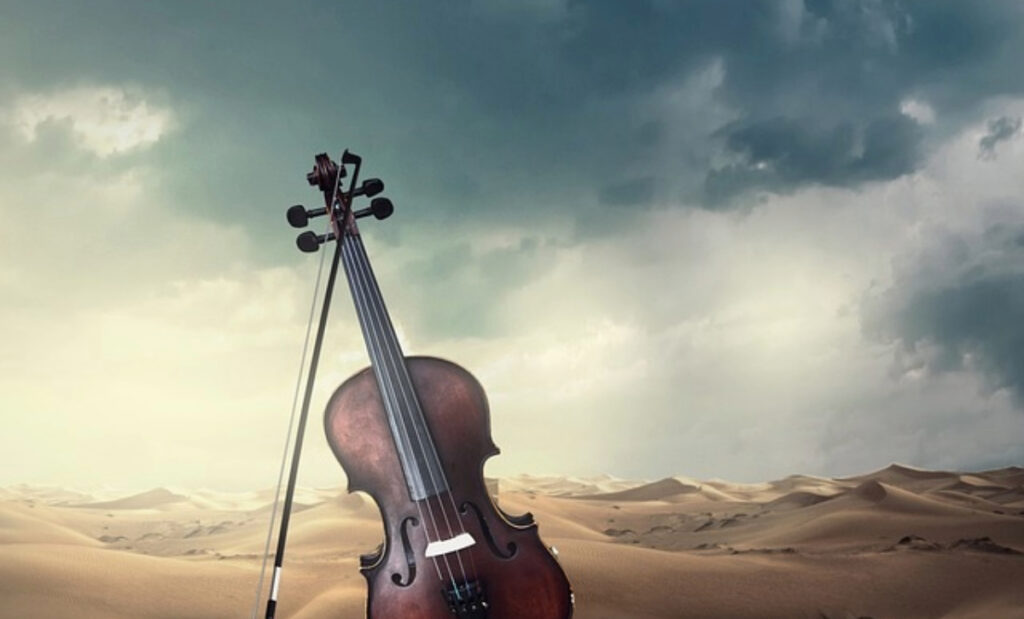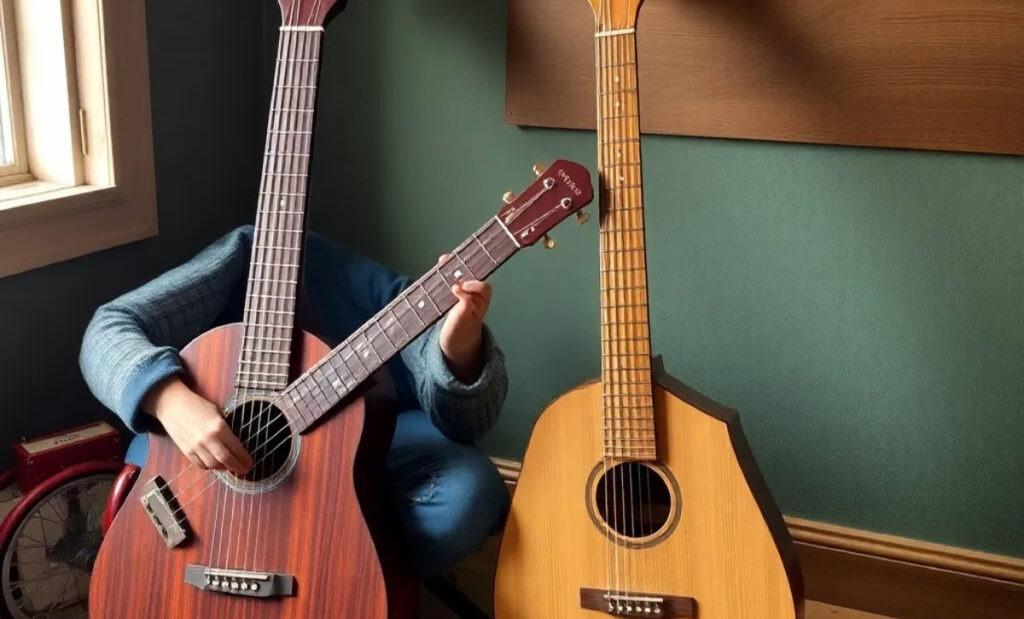Discovering the Eriskummallisin Soitin: A Journey into Unusual Musical Instruments

Introduction
Musical instruments come in all shapes and sizes, but the eriskummallisin soitin truly stands out as one of the most fascinating creations in the world of music. Translating to “the most peculiar instrument” in Finnish, this unique piece captures the imagination of musicians and enthusiasts alike. Its design, sound, and history make it a topic worth exploring, especially for those curious about unconventional music.
The eriskummallisin soitin is more than just an instrument—it’s a work of art that challenges traditional ideas of music-making. Whether it produces sounds inspired by nature or mimics futuristic tones, this extraordinary instrument invites players and listeners on a sensory adventure. In this blog, we’ll delve into its intriguing features, cultural significance, and how it inspires creativity in modern music.
What Makes the Eriskummallisin Soitin So Unique?
The eriskummallisin soitin is a name that sparks curiosity and wonder. Known as “the most peculiar instrument” in Finnish, this musical marvel combines creativity and tradition in unexpected ways. Its design often reflects unconventional shapes, from asymmetrical forms to playful, nature-inspired motifs. The craftsmanship behind this instrument showcases a blend of artistry and innovation that challenges typical musical norms.
Each eriskummallisin soitin is designed with unique characteristics that make it stand out in sound and appearance. For example, some models mimic animal calls, while others create haunting, otherworldly tunes that feel almost magical. These instruments are perfect for experimental musicians or anyone looking to explore new realms of sound.
The true magic of the eriskummallisin soitin lies in its ability to inspire. Players often find themselves improvising melodies they never imagined, unlocking a new side of their creativity. Whether used in concerts or personal practice, this extraordinary instrument is a testament to how music can push boundaries.

Why the Eriskummallisin Soitin Captivates Musicians
The eriskummallisin soitin is more than just an instrument—it’s an experience. Musicians love how it opens up new ways to connect with audiences. Its sound is unpredictable yet captivating, offering a fresh perspective on traditional music styles. For anyone tired of standard instruments, this provides an exciting alternative.
One reason for its popularity is its versatility. The eriskummallisin soitin can be used in various genres, from classical to electronic. It adds an element of surprise, making performances feel alive and dynamic. Musicians who use this instrument often describe it as a way to tell unique stories through sound.
Despite its uncommon nature, playing the eriskummallisin soitin isn’t as difficult as it seems. Many beginners are surprised by how intuitive it feels. Its design encourages exploration, meaning that even the simplest attempts can result in fascinating tunes.
Exploring the Sound of the Eriskummallisin Soitin
The eriskummallisin soitin offers a sound like no other, making it a standout instrument in the world of music. Known for its unusual tones, it combines natural elements with mechanical ingenuity to create sounds that can be haunting, playful, or even otherworldly. Musicians who play the instrument often describe it as capable of producing a wide emotional range, from soft and soothing melodies to bold, electrifying notes.
Each instrument’s sound is deeply tied to its design and material. For example, wood-based models may produce earthy, warm tones, while metal versions deliver sharper, more resonant sounds. The eriskummallisin soitin thrives on the element of surprise, as its notes can shift unpredictably, challenging traditional methods of composition. This feature allows it to fit seamlessly into both experimental and modern music.
Additionally, the eriskummallisin soitin invites improvisation. Since no two instruments are entirely alike, musicians can explore endless possibilities. They often find themselves blending traditional styles with avant-garde techniques, creating music that feels fresh and unique. Whether used solo or in a group setting, this instrument always brings a touch of wonder to any performance.

Modern Uses of the Eriskummallisin Soitin in Music
The eriskummallisin soitin has found a niche in modern music, where its unusual qualities are celebrated. It is commonly used in experimental genres, soundtracks, and even live performances to captivate audiences with its distinct sound. Its ability to mimic natural noises or futuristic tones makes it perfect for creating ambient or cinematic music.
In electronic music, the eriskummallisin soitin is often paired with synthesizers or loop stations to build complex soundscapes. DJs and producers use its unique timbres to add depth and texture to their tracks, creating immersive listening experiences. Its versatility makes it a favorite among artists looking to stand out in an increasingly competitive industry.
Live performances featuring the eriskummallisin soitin are a treat for audiences. The instrument’s unpredictable nature ensures no two performances are ever the same. Musicians often experiment on stage, weaving the instrument’s peculiar tones into their sets. This adaptability has also made it a staple in collaborative projects, where its sound complements traditional and contemporary instruments alike.
How the Eriskummallisin Soitin Inspires Creativity
The eriskummallisin soitin is more than an instrument—it’s a tool for creative exploration. Its unorthodox design and sound push musicians to think outside the box, encouraging them to break free from conventional styles. Many artists who play this instrument report feeling a deeper connection to their music, as its unique qualities force them to experiment with new techniques.
One way it inspires creativity is through its adaptability. The eriskummallisin soitin can be played using various methods, such as plucking, bowing, or tapping, each producing a different sound. This versatility allows musicians to approach their craft with a fresh perspective. For composers, the instrument is an endless source of inspiration, sparking ideas for innovative melodies and rhythms.
Moreover, the eriskummallisin soitin has become a symbol of artistic freedom. It challenges the idea that instruments need to follow traditional rules, proving that music can be created from anything. Whether used in professional settings or casual jam sessions, it empowers artists to take risks and embrace their individuality.

Can Anyone Play the Eriskummallisin Soitin?
Yes, anyone can learn to play the eriskummallisin soitin, regardless of their skill level. While its unconventional design may seem intimidating at first, beginners often find it surprisingly intuitive. The instrument is designed to encourage experimentation, so even simple attempts can produce interesting results.
For beginners, there are many resources available, such as online tutorials and beginner-friendly guides. These materials focus on teaching the basics, such as how to hold the instrument and produce its signature sounds. With practice, players can gradually explore more advanced techniques, unlocking the instrument’s full potential.
Experienced musicians also find the eriskummallisin soitin rewarding to play. Its unique challenges offer an opportunity to expand their skills and explore new musical territories. Whether you’re a beginner or a seasoned artist, the eriskummallisin soitin promises a fun and enriching experience.
Famous Performances Featuring the Eriskummallisin Soitin
The eriskummallisin soitin has graced many unique performances, showcasing its ability to captivate audiences. Its debut in experimental music concerts set a precedent for its use in unconventional and avant-garde settings. These performances often emphasize the instrument’s ability to create ambient and otherworldly sounds that linger in the listener’s memory.
One notable instance was a live performance by a Finnish ensemble that incorporated the eriskummallisin soitin into a symphonic piece. The contrast between traditional orchestral instruments and the peculiar tones of the eriskummallisin soitin brought an unexpected twist to the composition. Musicians and critics alike praised its contribution to the overall atmosphere of the performance.
In modern pop culture, the eriskummallisin soitin has appeared in soundtracks and theatrical productions. It’s often used to represent whimsical or eerie moments, adding depth and emotion to scenes. These famous appearances have made it a favorite among composers and directors who value its ability to evoke strong feelings.
DIY: Can You Create Your Own Eriskummallisin Soitin?
Yes, crafting your eriskummallisin soitin is possible and can be a fun project for creative minds. Many enthusiasts experiment with unconventional materials like recycled items, wood, or metal to design instruments with unique sounds and shapes. The process encourages innovation, as there are no strict rules to follow.
To start, gather materials that resonate or produce interesting tones when struck, plucked, or bowed. You can experiment with different shapes and structures to see how they affect the sound. Tools like basic woodworking kits or 3D printers can help you bring your design to life.
Once assembled, tuning the eriskummallisin soitin is an essential step. This process may involve trial and error, as each handmade instrument will have its distinct sound. The final result is a one-of-a-kind creation that reflects your artistic vision and musical preferences.

Eriskummallisin Soitin vs. Other Unique Instruments
When compared to other unique instruments, the eriskummallisin soitin holds a special place for its blend of creativity and functionality. Unlike some niche instruments, it is versatile and adaptable to various music genres. Its ability to produce a wide range of sounds gives it an edge over others that may have more limited applications.
For instance, while instruments like the theremin are known for their electronic tones, the eriskummallisin soitin offers both acoustic and experimental possibilities. It can be used alongside traditional and modern instruments, making it more flexible in live and studio settings.
Another distinction lies in its cultural significance. The eriskummallisin soitin carries a unique identity tied to Finnish innovation and craftsmanship. This aspect makes it not only a musical tool but also a conversation starter, blending art, culture, and music seamlessly.
The Future of the Eriskummallisin Soitin in Global Music
The eriskummallisin soitin is poised to become a global sensation as more musicians explore its potential. With the rise of experimental and fusion genres, this instrument offers endless opportunities for creative expression. Its ability to produce unique sounds ensures its place in the future of music.
Technological advancements are also contributing to its evolution. Digital adaptations of the eriskummallisin soitin allow musicians to replicate its sounds in electronic formats, making it accessible to a broader audience. Virtual instruments modeled after it are being integrated into music production software, expanding its reach.
Culturally, the eriskummallisin soitin may inspire the creation of other unconventional instruments. Its popularity highlights the importance of thinking outside the box and embracing diversity in music. As global interest grows, the eriskummallisin soitin could become a symbol of innovation in the ever-evolving music industry.
Conclusion
The eriskummallisin soitin is truly a one-of-a-kind instrument that captures the imagination of musicians and music lovers alike. Its unique design and sound make it a perfect choice for anyone looking to break away from traditional music. Whether used in experimental settings or as a main feature in a performance, it brings something fresh to the table. From its ability to inspire creativity to its versatility in various genres, this instrument continues to surprise and delight players and listeners.
Looking ahead, the eriskummallisin soitin is set to grow even more popular as more musicians discover its potential. With the rise of technology and the push for innovation in music, we’ll likely see new versions of this instrument and even digital adaptations. The future is bright for the eriskummallisin soitin, as it remains an essential tool for anyone looking to create unique and unforgettable music. Its influence on the global music scene shows that sometimes, the most unusual instruments are the ones that have the biggest impact.
FAQs About the Eriskummallisin Soitin
Q: What is the eriskummallisin soitin?
A: The eriskummallisin soitin is a Finnish term meaning “the most peculiar instrument.” It is known for its unique design and unusual sounds, often used in experimental and creative music.
Q: What makes the eriskummallisin soitin unique?
A: Its unpredictable tones, unconventional shapes, and ability to blend traditional and modern sounds make it one of the most extraordinary instruments in music.
Q: Can beginners learn to play the eriskummallisin soitin?
A: Yes, beginners can play it! The instrument encourages experimentation, making it fun and accessible for all skill levels.
Q: What materials are used to make the eriskummallisin soitin?
A: The materials vary, ranging from wood and metal to recycled or custom-designed components, depending on the builder’s creativity.
Q: Where is the eriskummallisin soitin used?
A: It is used in experimental music, live performances, soundtracks, and even electronic music to add a unique touch to compositions.
Q: Can I make my own eriskummallisin soitin?
A: Yes! Many musicians and hobbyists create their versions using available materials and tools. It’s a great way to explore creativity.
Q: How does the eriskummallisin soitin compare to other instruments?
A: Unlike most instruments, it produces unpredictable and highly diverse sounds, making it ideal for artists seeking something unique.
Q: Are there famous musicians who use the eriskummallisin soitin?
A: Yes, many experimental and avant-garde musicians incorporate it into their performances and recordings for its distinct sound.
Q: Can the eriskummallisin soitin be used in traditional music?
A: Absolutely! While it’s more common in experimental music, creative musicians have adapted it for traditional and fusion styles.
Q: What does the future hold for the eriskummallisin soitin?
A: With growing interest in experimental music and innovative instruments, it’s expected to gain more popularity and evolve in design and usage.






2 thoughts on “Discovering the Eriskummallisin Soitin: A Journey into Unusual Musical Instruments”